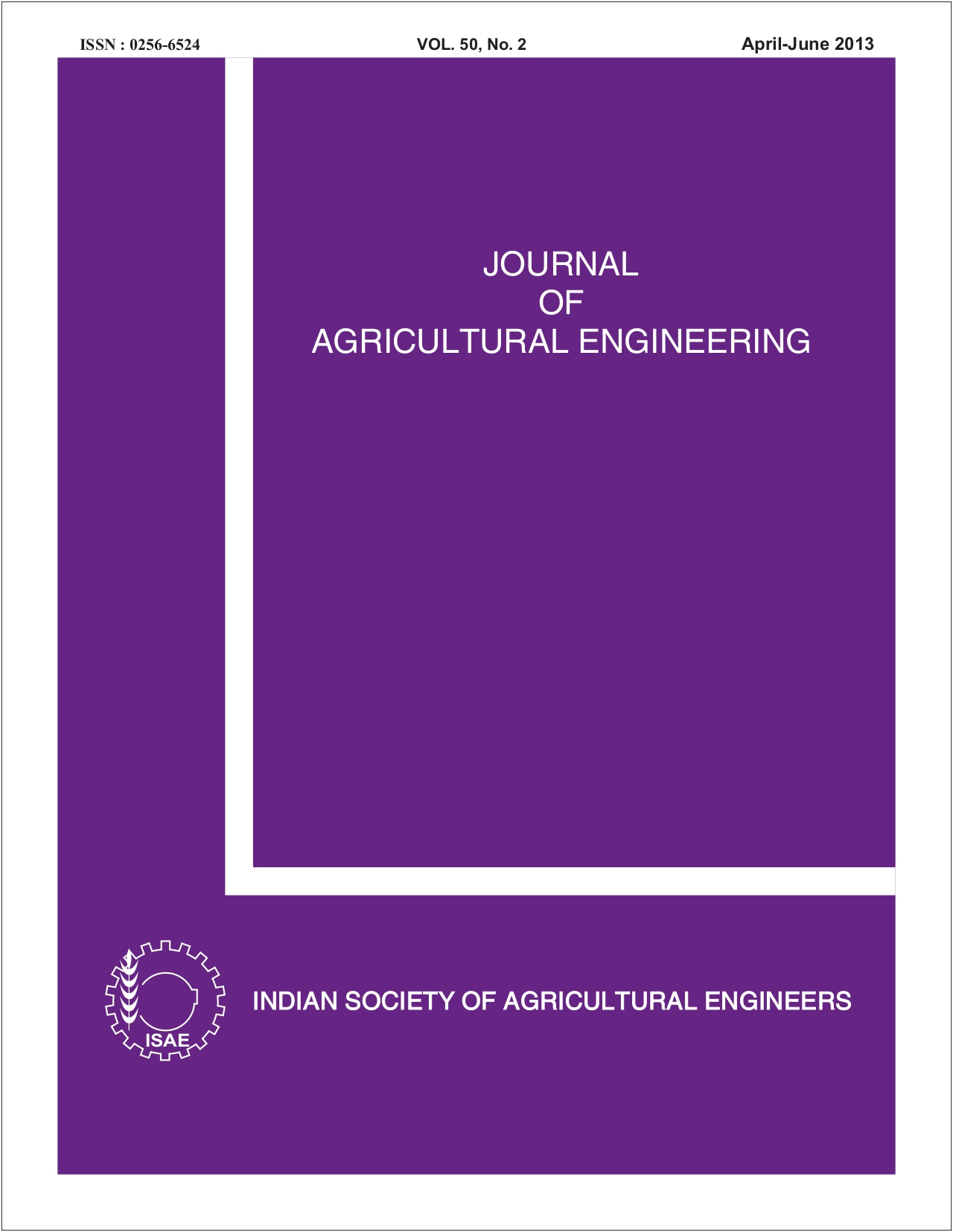Laboratory Simulation Study for Modelling Bare Soil Evaporation from Different Soil Layers in Root Zone
DOI:
https://doi.org/10.52151/jae2013502.1513Keywords:
Bare soil evaporation, meteorological parameters, multiple linear regression, water balanceAbstract
Bare soil evaporation (Es) is a predominant component of water balance during early growth stages of irrigated field crops, row crops with incomplete cover and in soils having shallow water table. Besides being a loss of precious water, it influences many other hydrologic and ecological processes. Laboratory simulation studies were conducted to characterize Es in two soil types, namely silty clay loam (SCL) and sandy loam (SL). Root zone water balance approach was used to estimate the Es. Results indicated that Es from top 0-15 cm soil depth in SCL soil varied from 2.0 to 3.0 mm.d-1 in the initial stage, which subsequently rose to 3.9 mm.d-1 in the drying stage. For SL soil, it varied from a minimum of 2.0 to a maximum of 3.8 mm.d-1 in 0-15 cm soil layer. Multiple linear regression models were developed to assess Es using the predominant meteorological parameters affecting the evaporation process. Validation with the field observations showed very close agreement with predicted results. The results of this study could be used in NCR region for the assessment of Es for similar soil types.
References
Allen R G; Pereira L S; Raes D ; Smith M. 1998. Crop Evapotranspiration, Guidelines for Computing Crop Water Requirements. FAO Irrigation and Drainage Paper 56, FAO, Rome, Italy.
Allen R G. 2000. Using the FAO-56 dual crop coefficient method over an irrigated region as part of an evapotranspiration intercoparison study. J. Hydrol., 229,
-41.
Allen RG. 2011.Skin layer evaporation to account for small precipitation events — An enhancement to the FAO-56 evaporation model. Agric. Water Manage., 99, 8-18.
Burt C M; Muztiger A J; Allen R G ; Howel T A. 2005. Evaporation research: review and interpretation. J. Irrig. Drain. Eng., 131 (1), 37-58.
Christopher B G. 2005. Evaporation from bare soil and soil cracks: A numeric study. Unpub. M. Sc. Thesis, The Oregon State University, USA.
Ingle VK. 2009. Modeling bare soil evaporation. Unpub. M. Sc. (Agril. Engg.) Thesis, Division of Agricultural Engineering, Indian Agricultural Research Institute, New Delhi.
Jalota S K; Prihar S S. 1998.Reducing Soil–Water Evaporation with Tillage and Straw Mulching. Iowa State University Press, Ames (ISBN 8138-2857), pp: 142.
Mellouli H J; Wesemael B; Poesen J; and Hartmann R. 2000. Evaporation losses from bare soils as influenced by cultivation techniques in semi-arid regions. Agric. Water Manage., 42, 355–369.
Murphy J M; Sexton D M H; David N B; Gareth S J; Webb M J; Matthew C; David A S. 2004. Quantification of modelling uncertainties in a large ensemble of climate change simulations. Nature, 430, 768-772.
Peck A J; Hatton T. 2003.Salinity and the discharge of salts from catchments in Australia. J. Hydrol., 272, 191-202.
Torres E A; Calera A. 2010. Bare soil evaporation under high evaporation demand: a proposed modification to the FAO-56 model. Hydrol. Sci. J., 55 (3), 303 – 315.














